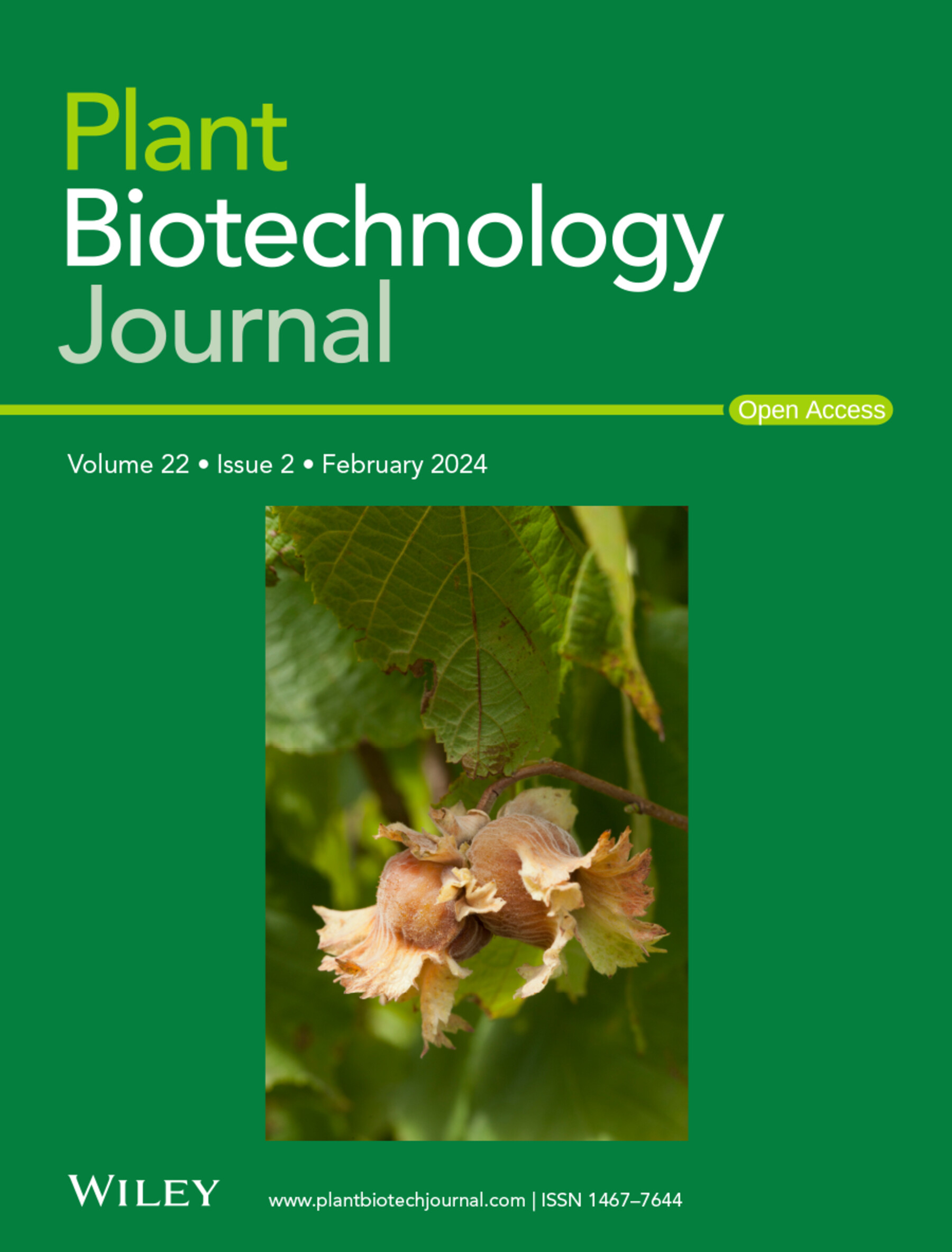A split ribozyme system for in vivo plant RNA imaging and genetic engineering
IF 10.1
1区 生物学
Q1 BIOTECHNOLOGY & APPLIED MICROBIOLOGY
引用次数: 0
Abstract
RNA plays a central role in plants, governing various cellular and physiological processes. Monitoring its dynamic abundance provides a discerning understanding of molecular mechanisms underlying plant responses to internal (developmental) and external (environmental) stimuli, paving the way for advances in plant biotechnology to engineer crops with improved resilience, quality and productivity. In general, traditional methods for analysis of RNA abundance in plants require destructive, labour-intensive and time-consuming assays. To overcome these limitations, we developed a transformative innovation for in vivo RNA imaging in plants. Specifically, we established a synthetic split ribozyme system that converts various RNA signals to orthogonal protein outputs, enabling in vivo visualisation of various RNA signals in plants. We demonstrated the utility of this system in transient expression experiments (i.e., leaf infiltration in Nicotiana benthamiana) to detect RNAs derived from transgenes and tobacco rattle virus, respectively. Also, we successfully engineered a split ribozyme-based biosensor in Arabidopsis thaliana for in vivo visualisation of endogenous gene expression at the cellular level, demonstrating the feasibility of multi-scale (e.g., cellular and tissue level) RNA imaging in plants. Furthermore, we developed a platform for easy incorporation of different protein outputs, allowing for flexible choice of reporters to optimise the detection of target RNAs.求助全文
约1分钟内获得全文
求助全文
来源期刊

Plant Biotechnology Journal
生物-生物工程与应用微生物
CiteScore
20.50
自引率
2.90%
发文量
201
审稿时长
1 months
期刊介绍:
Plant Biotechnology Journal aspires to publish original research and insightful reviews of high impact, authored by prominent researchers in applied plant science. The journal places a special emphasis on molecular plant sciences and their practical applications through plant biotechnology. Our goal is to establish a platform for showcasing significant advances in the field, encompassing curiosity-driven studies with potential applications, strategic research in plant biotechnology, scientific analysis of crucial issues for the beneficial utilization of plant sciences, and assessments of the performance of plant biotechnology products in practical applications.
 求助内容:
求助内容: 应助结果提醒方式:
应助结果提醒方式:


